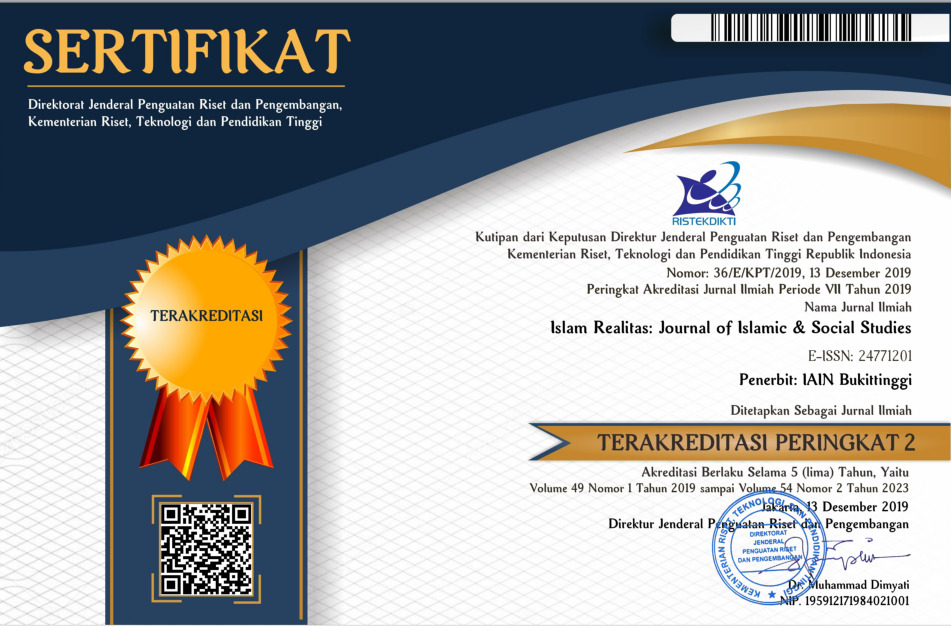ADDITIONAL MENU
Author Guidelines
General Guidelines
- The Manuscript should be written in English. It has never been published or is not in the process of being submitted for publication in other media and does not contain plagiarism elements.
- The Manuscript can take the form of research, case studies, or literary studies.
- The author should be registered as an author. The guidelines for registration and submission are at the bottom of this page.
- The Manuscript will be published in Jurnal Fuaduna: Jurnal Kajian Keagamaan dan Kemasyarakatn after peer review.
- The Manuscript should be written in accordance with the Author Guidelines and Template. The writing template can be downloaded here.
Manuscript Preparation and Structure of the Manuscripts
- Title. The title should be short, bright, and informative, but does not exceed 12 words. It has to be associated with the topics being addressed. The title of article should not include any uncommon abbreviation. The main topic should be written first, accompanied by its explanation.
- Author’s names and institutions. The author’s names should be accompanied by the author’s institutions, institutions address, and email addresses, without any academic and job titles.
- Abstract. Abstracts are written in Indonesian and English. The abstract must be a single paragraph consisting of 150-200 words. It must include the main question of the article, its novelty, research methods, findings, and keywords (3-5 phrases).
- Intoduction. The intoduction includes mainly: (1) background of the research; (2) concept and problem-solving plan; (3) research methodology; and (4) research formulation and research purpose. In this section, sometimes, there are some recommendations and suggestions of the research findings.
- Content. This part consists of the research results and their analysis. The results obtained from the research must be supported by sufficient data. The results must answer the research questions or deal with the research hypothesis in the introduction part. The following components should be covered in the discussion: How do your results relate to the original question or objectives outlined in the Introduction (what/how)? Do you provide a scientifical explanation for each of your results or findings (why)? Are your results consistent with what other investigators have reported, or are there any differences?
- Conclusion. This section should deal with the objectives of the research and the research discoveries. The concluding remark should not only involve the recurrence of findings and discussions or abstracts; it should also propose potential studies and point out those that are ongoing.
- References. The literature listed in the References contains only the sources referred or included in the article. Please use Mendeley as the Reference Manager application. Sources should consists of 20-30 references from books, proceedings, and research results. Eighty percent of referenced journal articles must be published within the last 10 years. Citations and references follow the Chicago Manual of Style 17th edition(full note) style, as seen in the following examples:
- Taufik, Zulfan. Dialektika Islam dan Humanisme: Pembacaan Ali Syari’ati. Jakarta: Onglam Books. 2018.
- Rozi, Syafwan. “Wacana Sufistik : Tasawuf Falsafi di Nusantara Abad XVII M: Analisis Historis dan Filosofis,” Islam Realitas: Journal of Islamic & Social Studies 3, no. 2 (2017): 169 <https://doi.org/10.30983/islam_realitas.v3i2.405>.
- Bach, Kent. “Performatives,” in Routledge Encyclopedia of Philosophy <http://www.rep.routledge.com> {accessed 3 October 2001}
- Dominato, Gabriel. Morceaux de Conversation Avec Jean-Luc Godard, online video recording, YouTube, 10 January 2013, <https://www.youtube.com/watch?v=_XcuHub-S8o> {accessed 10 October 2017}
- Ingram, R. J. “Historical Drama in Great Britain from 1935 to the Present” {unpublished doctoral thesis, University of London, Birkbeck College, 1988}
- Schmidt, Michael. “Tragedy of Three Star-Crossed Lovers,” Daily Telegraph, 1 February 1990
- Sinangguli, Sinaga (Leader community), Interview, 16 Februari 2017.




